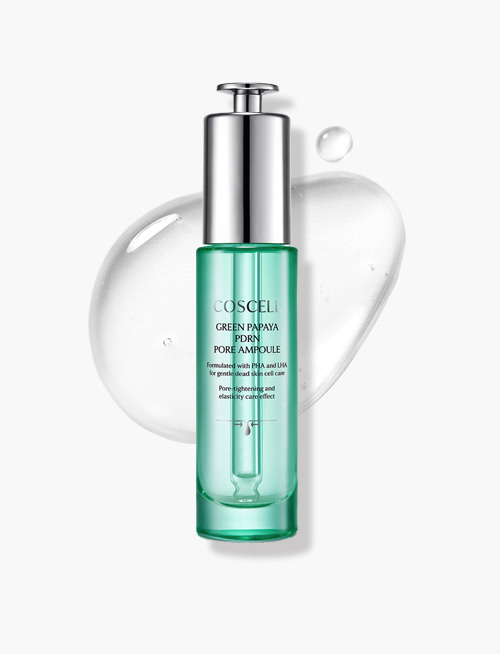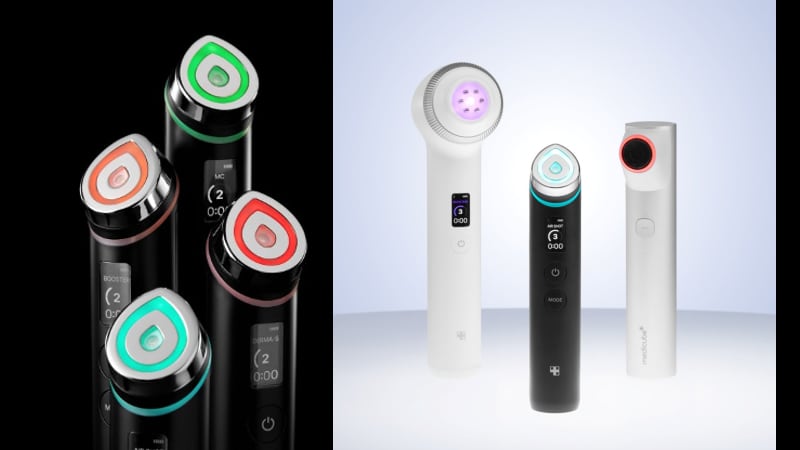One of the hottest skin care ingredients emerging from South Korea in the past year, PDRN was approved for use by the country’s Ministry of Food and Drug Safety (MFDS) in 2008.
Originally used mainly for treatments at dermatology and aesthetic clinics, the compound, best known for its cellular repair, hydrating and anti-inflammatory properties, has increasingly been incorporated into skin care products.
Some examples of cosmetics companies that have rode on this trend include APR Corp’s medicube. Its Pink PDRN Peptide Serum combines PDRN with peptides to improve skin elasticity, particularly catering for mature skin and preventing early signs of ageing.
Anua’s PDRN Hyaluronic Acid Capsule 100 Serum is formulated with salmon DNA-derived PDRN and 11 types of hyaluronic acid to deliver moisture to every layer of the epidermis, to revitalise dehydrated and dull skin, strengthen skin barrier, and enhance skin texture.
Providing a plant-based alternative to the commonly used fish-derived PDRN, VT Cosmetics’ Hydrogel Mask contains PDRN extracted from wild ginseng. The sheet mask is also infused with lactobacillus ferment, squalane and panthenol, among other skin-nourishing ingredients.
The latest to hop onto the bandwagon is derma beauty brand COSCELL, which recently launched a new product, called Green Papaya PDRN Pore Ampoule, targeted at addressing various pore concerns.
Utilising patented technology, the product contains a PDRN ingredient extracted from green papaya, an unripe papaya that contains more papain than a regular papaya.
Papain is an enzyme that breaks down dead skin cells and proteins on the skin’s surface, making it an effective exfoliator to improve skin texture.
It is also claimed to help reduce hyperpigmentation, soothe skin irritation and inflammation, and promote collagen secretion to diminish the appearance of fine lines.
According to COSCELL, the product has completed human application tests for its effects on skin texture and pore management.
“Through the tests, it has been confirmed that the use [of Green Papaya PDRN Pore Ampoule] improves the skin condition, and one can expect more satisfactory changes with continued use.”
Furthermore, the formula comprises polyhydroxy acid (PHA) and lipohydroxy acid (LHA), which are chemical exfoliants that work only on the surface layers of the skin, making them gentler and more suitable for sensitive skin, compared to other acids such as alpha hydroxy acid (AHA) and beta hydroxy acid (BHA).
Together, these ingredients contribute to sebum management, unclogging of pores, acne control, and fortification of the skin barrier.
The inclusion of hydrolysed collagen also helps with maintaining skin moisture and elasticity.
“The highly concentrated watery formula is quickly absorbed and provides a moist finish without stickiness. As it is a skin care product intended to be used daily, a subtle green scent was added to increase user satisfaction.”
Multiple benefits
PDRN is a naturally occurring compound derived from two main sources — salmon DNA, which is biocompatible with human skin and stimulates cell proliferation; and wild ginseng, whose antioxidant and nutrient-rich content are key for skin rejuvenation.
In Korea, PDRN is typically used in aesthetic treatments like microneedling and microscopic injections (mesotherapy).
The popularity of PDRN has been attributed to its multiple benefits, including boosting skin regeneration through the production of fibroblasts, which are cells responsible for collagen and elastin synthesis, leading to firmer, more youthful-looking skin.
Additionally, the compound is said to have the ability to retain moisture, resulting in a supple and radiant complexion.
Due to its anti-inflammatory properties, PDRN also accelerates wound healing, repair of damaged skin from acne scars, sun damage and ageing, and restoration of the skin’s barrier function.





